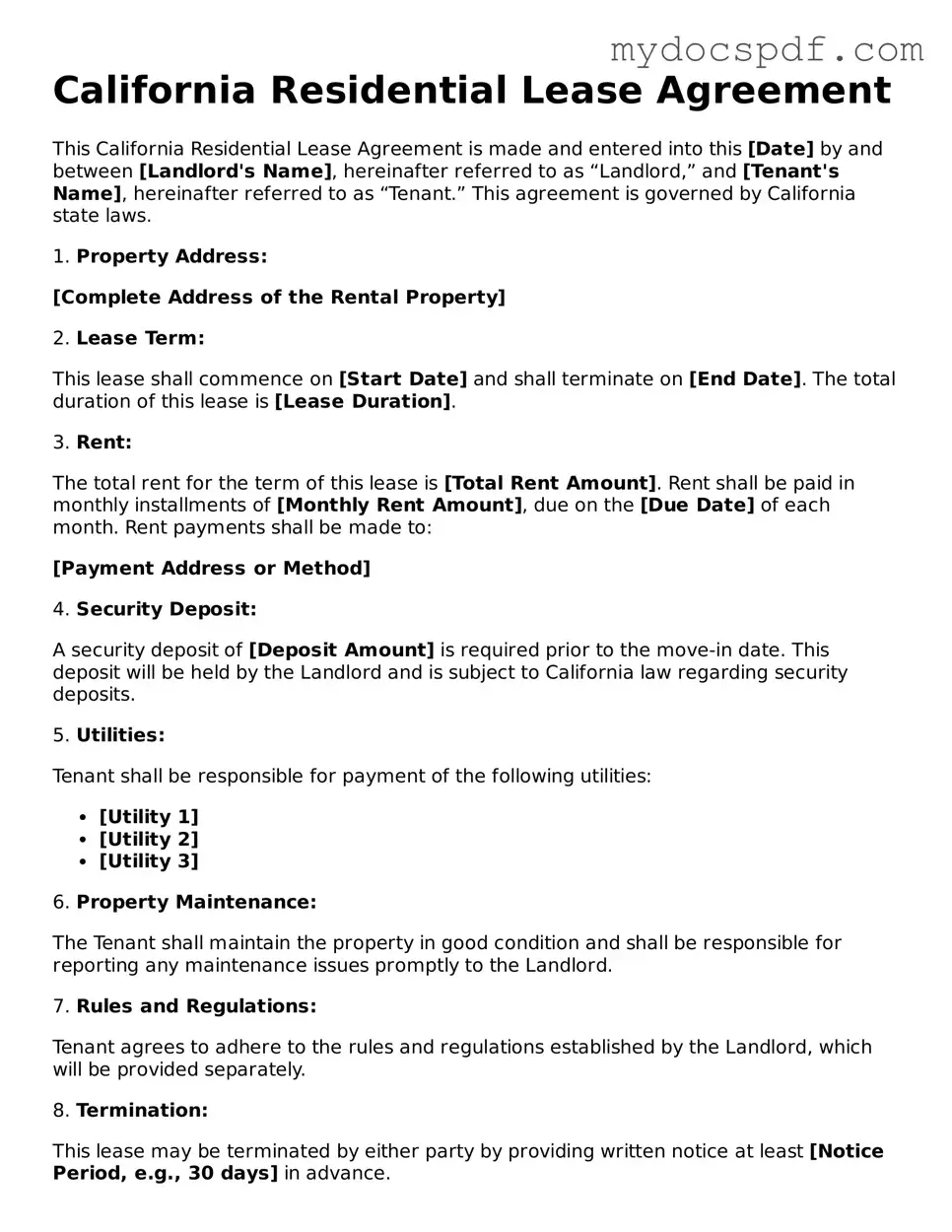California Residential Lease Agreement
This California Residential Lease Agreement is made and entered into this [Date] by and between [Landlord's Name], hereinafter referred to as “Landlord,” and [Tenant's Name], hereinafter referred to as “Tenant.” This agreement is governed by California state laws.
1. Property Address:
[Complete Address of the Rental Property]
2. Lease Term:
This lease shall commence on [Start Date] and shall terminate on [End Date]. The total duration of this lease is [Lease Duration].
3. Rent:
The total rent for the term of this lease is [Total Rent Amount]. Rent shall be paid in monthly installments of [Monthly Rent Amount], due on the [Due Date] of each month. Rent payments shall be made to:
[Payment Address or Method]
4. Security Deposit:
A security deposit of [Deposit Amount] is required prior to the move-in date. This deposit will be held by the Landlord and is subject to California law regarding security deposits.
5. Utilities:
Tenant shall be responsible for payment of the following utilities:
- [Utility 1]
- [Utility 2]
- [Utility 3]
6. Property Maintenance:
The Tenant shall maintain the property in good condition and shall be responsible for reporting any maintenance issues promptly to the Landlord.
7. Rules and Regulations:
Tenant agrees to adhere to the rules and regulations established by the Landlord, which will be provided separately.
8. Termination:
This lease may be terminated by either party by providing written notice at least [Notice Period, e.g., 30 days] in advance.
9. Governing Law:
This lease agreement shall be governed by the laws of the State of California.
IN WITNESS WHEREOF, the parties hereto have executed this California Residential Lease Agreement on the date first above written.
___________________________ ___________________________
[Landlord's Name] (Landlord) [Tenant's Name] (Tenant)
